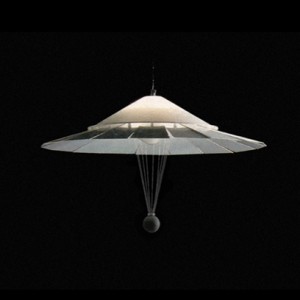

MARGINALIA
SET DESIGN AND MOTION GRAPHICS
Marginalia:Re-Visioning Roy Kiyooka. An ethereal set, motion graphics and video projection for a performance work, celebrating the internationally acclaimed Canadian artist, Roy Kiyooka. The set and video projection enveloped performers and integrated the audience into the new-music piece. Winner of the 2008 Rio Tinto Alcan Performing Arts Award.
Role
Creative Director.Scenography, Videography.
Why
Roy Kiyooka was an inspirational figure in the Canadian art scene. Awarded the Order of Canada, he was a painter, poet, performance artist, filmmaker and musician. Marginalia was a way of re-engaging with his work and ideas.How
I took inspiration from Kiyooka’s work StoneDGloves, as well as his collection of photographs and poetry. I created a setting for the performance work by surrounding the ensemble in a landscape of stones and hung gloves. The audience interacted directly with the set. I also animated Kiyooka’s paintings and expanded on the stone/glove/poetry theme to create a feature-length video projection sequence.Result
Winner of the 2008 Rio Tinto Alcan Performing Arts Award.A short video compilation with a few excerpts from the motion graphics, and the 90+min performance piece, Marginalia: Re-Visioning Roy Kiyooka.
Marginalia was a way of re-engaging with Roy's work and ideas. An ethereal set for an interdisciplinary new music performance in which projected video enveloped performers and integrated the audience into the piece.

RELICS
PRODUCT DESIGN
Relics is series of lighting objects derived from a personal research project. These prototypes were designed to explore and illustrate a semi-industrial production process for creating objects using discarded elements as primary material. ‘Up-cycling’ before it had such a lovely name.
Role
Designer.Product Concept, Design, Fabrication.
Why
As designers, we work with our ideas from a blank slate as we conceive, invent and articulate the products that we live with. The life cycle of our design work is linear. It begins with raw materials that get fashioned and forged at our whim, and once consumed, it ends with the objects being discarded as they arrive at their ‘end of life’. However, this is not truly a complete cycle, so for this project, I imagined closing the gap and creating a life cycle loop within the design process itself.How
By replacing the initial raw material for the lamps with discarded parts and objects, I started at the end to begin the cycle anew. The intention of this exercise was not simply to craft new objects, but to demonstrate how end-of-life objects could be up-cycled through a mediated and semi-industrial process. With a conscious move away from the realm of handcraft, these one-off prototypes were designed and detailed with a serial production process in mind to create a class of semi industrial objects.Result
This series of objects was published in leading design periodicals and provoked engaging dialogue about the production cycle and the role of the designer. All the lamps were acquired into private collections.
ALETTA
Industrial Design
Aletta evolved from a research project on the domestic environment - both as social and private space. From an exercise in reframing the function of our quotidian objects, Aletta became an inversion that expanded the scope of the lighting object. Selected as one of the 10 best products at the Salone del Mobile, Milan, Aletta was shortlisted for the Compasso d’Oro.


















